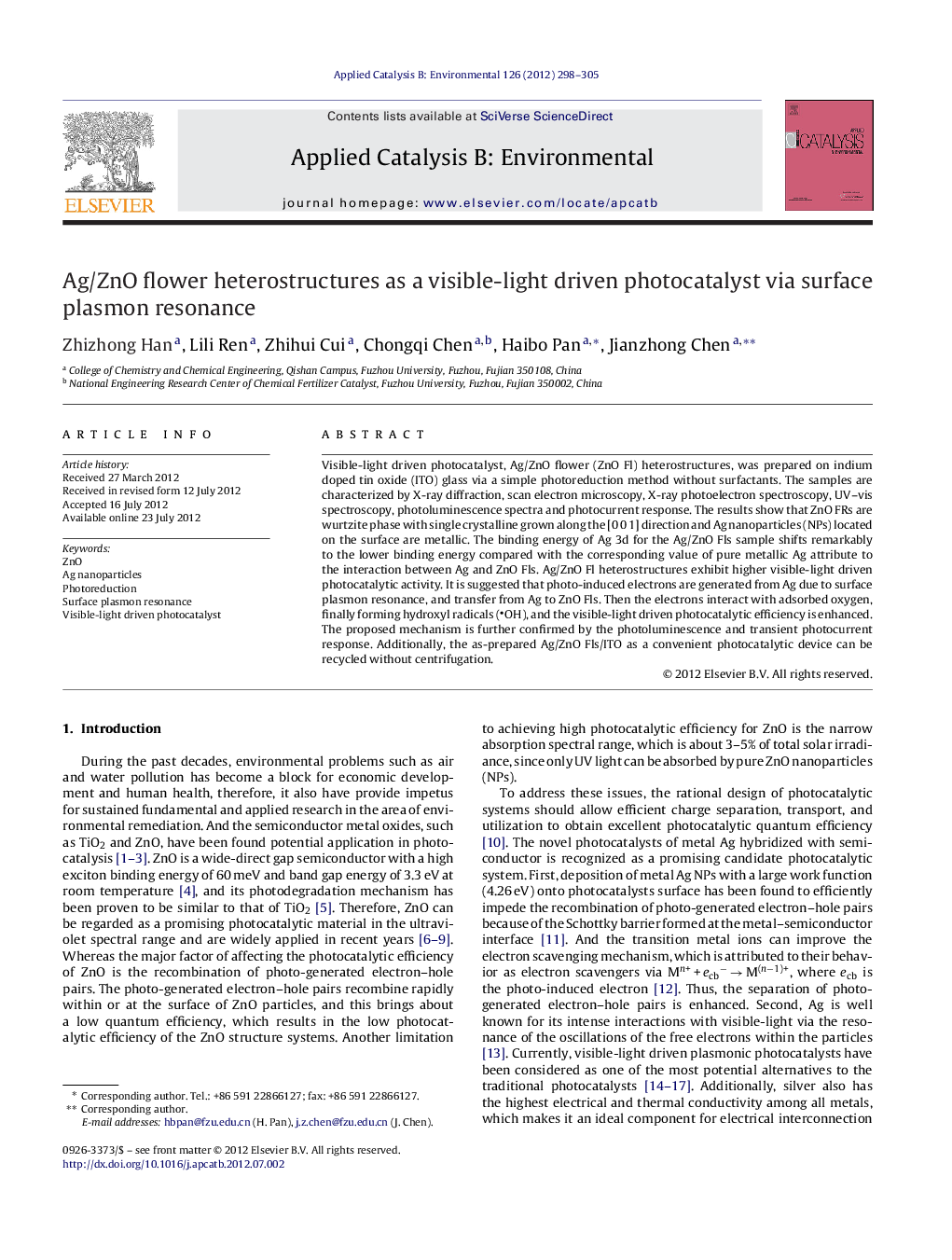| Article ID | Journal | Published Year | Pages | File Type |
|---|---|---|---|---|
| 46555 | Applied Catalysis B: Environmental | 2012 | 8 Pages |
Visible-light driven photocatalyst, Ag/ZnO flower (ZnO Fl) heterostructures, was prepared on indium doped tin oxide (ITO) glass via a simple photoreduction method without surfactants. The samples are characterized by X-ray diffraction, scan electron microscopy, X-ray photoelectron spectroscopy, UV–vis spectroscopy, photoluminescence spectra and photocurrent response. The results show that ZnO FRs are wurtzite phase with single crystalline grown along the [0 0 1] direction and Ag nanoparticles (NPs) located on the surface are metallic. The binding energy of Ag 3d for the Ag/ZnO Fls sample shifts remarkably to the lower binding energy compared with the corresponding value of pure metallic Ag attribute to the interaction between Ag and ZnO Fls. Ag/ZnO Fl heterostructures exhibit higher visible-light driven photocatalytic activity. It is suggested that photo-induced electrons are generated from Ag due to surface plasmon resonance, and transfer from Ag to ZnO Fls. Then the electrons interact with adsorbed oxygen, finally forming hydroxyl radicals (OH), and the visible-light driven photocatalytic efficiency is enhanced. The proposed mechanism is further confirmed by the photoluminescence and transient photocurrent response. Additionally, the as-prepared Ag/ZnO Fls/ITO as a convenient photocatalytic device can be recycled without centrifugation.
Graphical abstractFigure optionsDownload full-size imageDownload as PowerPoint slideHighlights▸ Ag/ZnO flower heterostructures was synthesized via facile photoreduction method. ▸ It is the first work about Ag/ZnO flower used as a photocatalytic device. ▸ Ag/ZnO flower heterostructures exhibit excellent visible-light catalytic activity. ▸ This photocatalysts based on ITO is convenient to recycle without centrifugation. ▸ The photo-induced electrons transfer from Ag to ZnO due to surface plasmon resonance.
